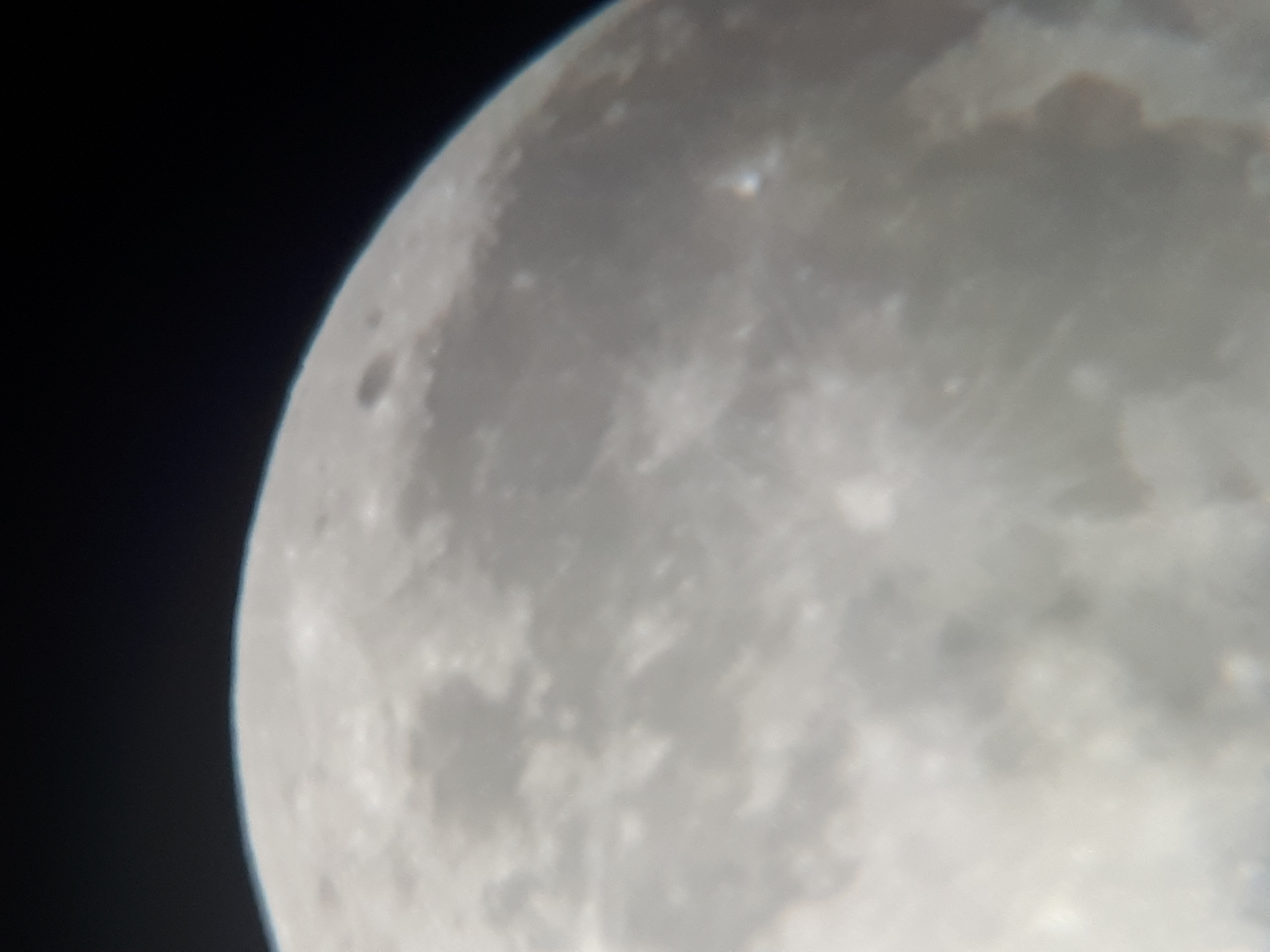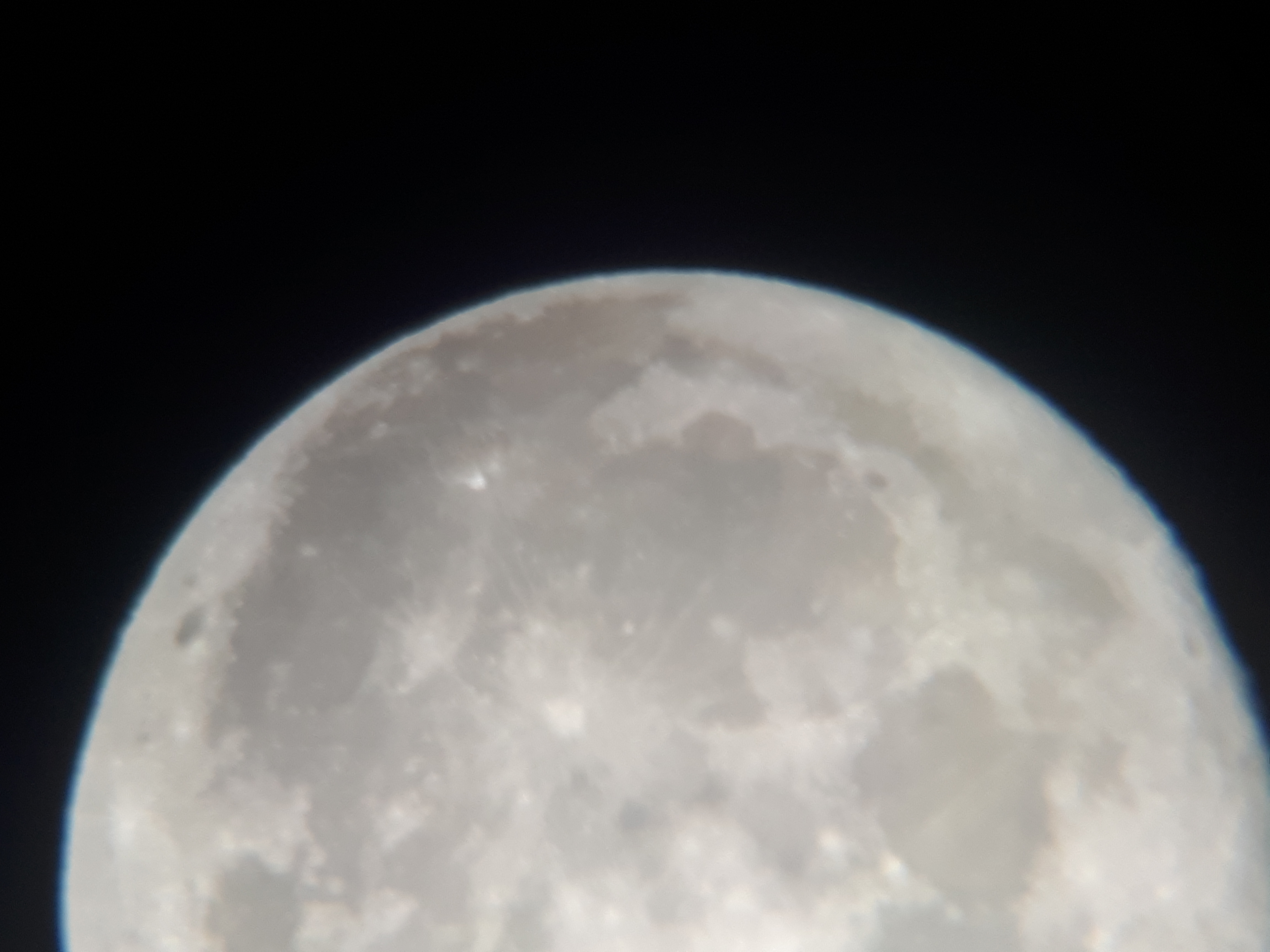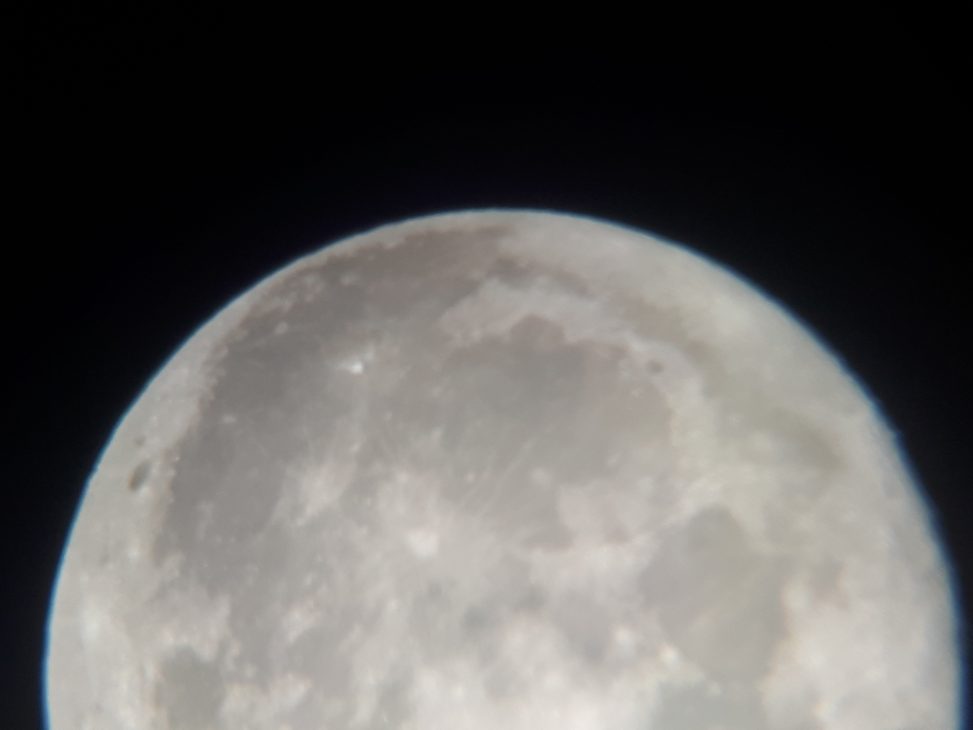Hello again,
Okay, this isn’t about the moon landing. However, this is about the moon. Last night I saw a break in the clouds when on my way home from a soccer game. Immediately upon entering my home, I got my telescope and brought it outside. I set it up as fast as possible; I saw some clouds approaching dangerously fast. Telescope pointed at the moon, lights around me turned off, I attached this universal cell phone adapter to the telescope. It allows me to take photos through the telescope without having to hold it with my hands (drastically reducing the shaking of the image). I now understand why they say to leave the telescope and not touch it, and why they say to have a tripod for your camera. Originally, I just thought they were being a little nit-picky. Now, I realize the importance of tripods and not touching things. the feature image is one of three photos that I took of the moon. (see below)

In these photos, you can see some disturbance caused by the humidity between my telescope and the moon. There isn’t much I can do about that except for taking photos and observing in a less humid location.
Some interesting facts about the moon:
- The moon has craters and mountains caused by comets and asteroids that have collided with it, which has protected the earth from some devastating impacts
- Mons Huygens, the tallest lunar mountain, is 4700 meters tall, which is slightly over half the size of our very own Mt. Everest
- The darker areas are called the seas and were originally thought to be oceans
- The moon is made of rock found on earth, while meteors are made of a different kind of rock only found in outer space. This has led astronomers, and myself, to believe that the moon was part of the earth. This would have been formed when the earth was struck by a giant asteroid. Causing a large chunk to leave the surface of the earth. However, the earth’s gravity kept it in orbit. Coincidentally, this put us on our 23 1/2° tilt.
Some of these points can be found here. Others, I have learned from an astronomy class at Camosun College. I highly recommend the course to amateur astrophotographers and to anyone else who is interested in basic astronomy.
Till next time,
Preston

Leave a Reply